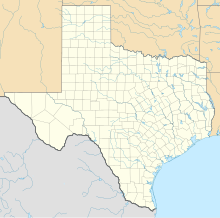Battle of the North Fork of the Red River
| Battle of North Fork of Red River, 1872 | |||||||
|---|---|---|---|---|---|---|---|
| Part of the Indian Wars | |||||||
|
|||||||
| Belligerents | |||||||
|
4th Cavalry Regiment (United States), Tonkawa scouts |
Comanche Kotsoteka Band | ||||||
| Commanders and leaders | |||||||
| Ranald S. Mackenzie | Kai-Wotche (killed) Mow-way (escaped) |
||||||
| Strength | |||||||
| 12 officers and 272 enlisted men, 20 Tonkawa scouts | Unknown, but the best guesses are 160 in the band, including 100 women and children | ||||||
| Casualties and losses | |||||||
| 3 killed 7 wounded |
approximately 50 killed 130 captured |
||||||
|
|
|||||||
The Battle of North Fork or the Battle of the North Fork of the Red River occurred on September 28, 1872, near McClellan Creek in Gray County, Texas, United States. A monument on that spot marks the site of the battle between the Comanche Indians under Kai-Wotche and Mow-way and a detachment of cavalry and scouts under U.S. Army Colonel Ranald S. Mackenzie. There was an accusation that the battle was really an attempt "to make a massacre," as during the height of battle some noncombatants were wounded while mixed in with warriors.
This battle is primarily remembered as the place where the army for the first time struck at the Comanches in the heart of the Llano Estacado in the western panhandle of Texas.
This battle was a precursor to the Red River War of 1873–4. In early 1872, the new Military Commander of the District of Texas decided it was time to strike at the Comanches in the heart of their homeland on the Comancheria, much as the Texas Rangers had done 14 years before at the Battle of Little Robe Creek. The Grant administration's "Quaker Peace Policy" was still in effect, which placed the appointment of Indian agents in the hands of Protestant religious organizations (Quakers were the first to participate, thus the name of the policy), not political patrons. In addition, Indians were to be moved to reservations peacefully or forcefully, and U.S. troops were not to engage in combat against them. Under the policy, federal troops at Fort Sill could not be deployed against the Comanche. Troops from the Texas District, however, could be.
Mackenzie marched out of Fort Concho in early July 1872, to begin his campaign. He reestablished Camp Supply on Duck Creek, on the edge of the Llano Estacado where he established his command. From there, McKenzie dispatched several scouting parties, one of which discovered a well-traveled path with hoof prints of a large herd of cattle stretching west. This find caught Mackenzie's attention, and on July 28, 1872, he marched 272 troopers, 12 officers, and 20 Tonkawa scouts into the heart of the Comancheria. On August 7, 1872, the detachment obtained supplies and rested at Fort Sumner, New Mexico. They then marched north to Fort Bascom, New Mexico, arriving August 16, 1872.
...
Wikipedia

